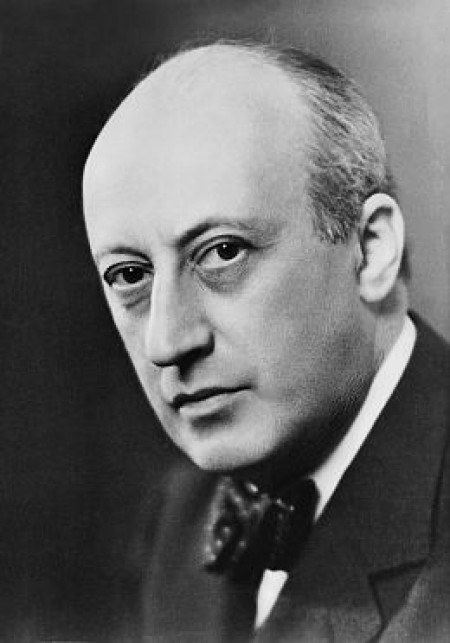
15 January 1884, Budapest – 22 February 1940, Budapest
Imre Keéri-Szántó belonged to that generation of Hungarian pianists to whom the legacy of Liszt and the other pianist-composers of the 19th century was transmitted directly by Liszt's pupils, and who, as the last representatives of that romantic style of performing, handed on their knowledge to their own students.
Since the traditional middle class professions promised a higher social status and a more certain livelihood than being a musician, the young Keéri-Szántó studied law concurrently with his musical education. He gained a doctorate in law, but in the meantime decided to have a musical career. Like Dohnányi, Bartók and György Ferenczy, he too studied with István Thomán, one of Liszt's best pupils. Thomán accepted him as his pupil in the autumn of 1902, and taught him for four years. Keéri-Szántó later on spoke to his own students about Thomán with respect, saying that though he was not a piano virtuoso, owing to his exceptional intelligence, he absorbed everything of Liszt's personality that could be absorbed, and passed it on to his own students. Keéri-Szánto completed his studies at the Academy in 1907, gaining an artist's diploma, as well as a teacher's qualification, for which he had studied with Kálmán Chován. It is characteristic of his many-faceted personality and the depth of his musical interests that though he was looking forward to a good career as a pianist, he studied composition as well for two years ((1905/06-1906/07) with János Koessler.
Having received his artist's diploma, he set out for the musical centres of Western Europe, where he gave concerts; then, in 1912, on his return home, he gave up the idea of an international artistic career and became a teacher. From 1912 to 1919 he taught at the Budapest Higher Music School, as well as acting as professional inspector of the music courses in Budapest; then, in the autumn of 1918 he became a professor at the Music Academy. As well as giving concerts, though only in Hungary, he taught almost right up to his death, on 22 February 1940. His contemporaries regarded his professorial work over two decades as exemplary, which is shown also by the excellent artists and teachers he had trained. His most talented pupils included Géza Anda, Béla Böszörményi-Nagy, György Cziffra, Katalin Nemes, György Sebők and Tibor Wehner. As regards his pedagogical methods, it appears from György Cziffra's memoires that – like Liszt and Thomán – Keéri-Szántó did not regard teaching his students the techniques of piano playing as his most important task (he left that to his assistant) but concentrated on developing the sure knowledge of style that is indispensable for an independent artistic production. Romantic music, the compositions of Schubert and Chopin, were closest to him, and he tried to shape his pupils' musical tastes by his own inspired playing of them. Aladár Tóth, who in his review of a solo concert given in January 1935 summarized the essence of Keéri-Szántó's performing art, at the same time pointed out the overriding aim of his pedagogical activities: "(Imre Keéri-Szántó) put together a huge programme, which gave a full account of Chopin's personality. His aim was to depict the personality of this poet of music: this is the essence of Keéri-Szántó's art. Performing the individual works is not the goal for him, but just the means for characterising Chopin. The pedantic philistine might be shocked by the faintness and lack of detail of some of the features, but someone who views the portrait from the appropriate distance, looking at it as a whole, will see that this picture of Chopin is lively, true, surprisingly sharp in its characterisation, and true to life. The broad brushwork by the master is more telling than a lot of schoolmasterly detail. From another angle, the minute working out of certain details reveals clearly the characteristic ‘capillary vessels' in the pulsating circulation of life in Chopin's music.
"Those who receive with humility the inspiration of the music-poet's soul" – Aladár Tóth goes on – "can free their imagination at their instrument without the danger of finding themselves outside their role. On the contrary, this way the concert looses its rigid cerebral character and can become a more direct experience. That is why Keéri-Szántó's capriciousness, his freedom must not be confused with the arbitrariness of those Chopin players who for the sake of deceptive pianistic bravura drop – Chopin himself. That which is truly alive, creates an atmosphere around itself. At Keéri-Szántó's concert we felt the genuine Chopin atmosphere, at this concert Chopin's spirit was alive." Keéri-Szántó played for the audience at the concert with the same aim in mind as when he played for his pupils at their classes: "to reveal, in the light of his interesting, original artist's personality" the composer, and by the exemplary playing of the "sonata, ballade, impromptu, berceuse, prelude, nocturne, etude, mazurka, waltz or scherzo" point to the essential features of the composer's life's work.
A. K.


